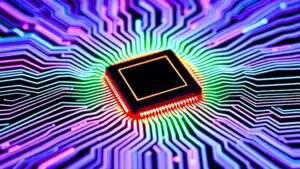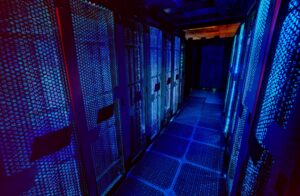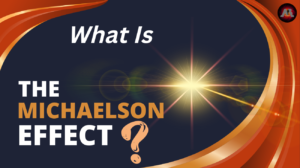Smart plugs and smart light bulbs represent two distinct approaches to home lighting automation, each offering unique benefits and capabilities. Together, they provide homeowners with unprecedented control over their lighting environment, energy usage, and home automation possibilities. This article examines both technologies, their features, applications, and how they can work together to create versatile smart home lighting solutions.
#1
Understanding Smart Plugs
Smart plugs function as intelligent intermediaries between your electrical outlets and devices, enabling remote control capabilities for virtually any electronic device. These simple yet powerful devices plug directly into standard wall outlets, with your appliances then connecting to the smart plug.
#2
• Scheduling capabilities allow users to set timers for when devices should turn on or off automatically. For example, you can program coffee makers to activate in the morning so your coffee is ready when you wake up, or set devices to automatically shut off after a few hours to prevent potential hazards.
• Convenience is another significant advantage, as smart plugs allow you to control multiple devices with a single tap on your smartphone or a voice command, eliminating the need to manually operate switches around your home. This is especially helpful for hard-to-reach outlets or for creating coordinated lighting scenes across multiple fixtures.
Functionality and Benefits
• Energy efficiency stands as a primary benefit, as smart plugs enable users to turn off electronics when they aren't being used, reducing standby power consumption and lowering electricity bills. This is particularly valuable for devices that maintain standby modes even when not actively in use.• Scheduling capabilities allow users to set timers for when devices should turn on or off automatically. For example, you can program coffee makers to activate in the morning so your coffee is ready when you wake up, or set devices to automatically shut off after a few hours to prevent potential hazards.
• Convenience is another significant advantage, as smart plugs allow you to control multiple devices with a single tap on your smartphone or a voice command, eliminating the need to manually operate switches around your home. This is especially helpful for hard-to-reach outlets or for creating coordinated lighting scenes across multiple fixtures.
#3
Implementation Simplicity
One of the most appealing aspects of smart plugs is their ease of installation and use. They require no special wiring knowledge or electrical modifications to your home, making them accessible to renters and homeowners alike. Simply plug them in, connect to your home's Wi-Fi network through the manufacturer's app, and begin controlling your devices immediately.
#4
Smart Light Bulbs: Features and Capabilities
Smart light bulbs integrate connectivity and control features directly into the bulb itself, offering advanced lighting capabilities beyond simple on/off functionality. The market for these devices has evolved significantly over the past decade, with prices becoming much more affordable while features have expanded dramatically.
#5
Many smart bulbs now support the Matter smart home standard, which improves cross-platform compatibility and simplifies setup processes. This means users aren't locked into a single ecosystem and can mix devices from different manufacturers while maintaining seamless control.
Advanced features available in modern smart bulbs include:
• Custom lighting scenes that can be activated with a single command, transforming room ambiance instantly for different activities like reading, entertaining, or relaxing.
• Energy usage reports that help track consumption and identify opportunities for further efficiency improvements.
• Music synchronization capabilities that allow lights to pulse and change color in rhythm with audio, creating immersive entertainment experiences.
Options and Functionality
Today's smart bulbs offer impressive versatility. Products like the AiDot Linkind Matter Smart Light Bulb can display up to 16 million colors and a range of white tones, supporting multiple smart home automation platforms including Alexa, Google, HomeKit, and SmartThings. These capabilities enable sophisticated lighting effects, mood setting, and integration with broader home automation systems.Many smart bulbs now support the Matter smart home standard, which improves cross-platform compatibility and simplifies setup processes. This means users aren't locked into a single ecosystem and can mix devices from different manufacturers while maintaining seamless control.
Advanced features available in modern smart bulbs include:
• Custom lighting scenes that can be activated with a single command, transforming room ambiance instantly for different activities like reading, entertaining, or relaxing.
• Energy usage reports that help track consumption and identify opportunities for further efficiency improvements.
• Music synchronization capabilities that allow lights to pulse and change color in rhythm with audio, creating immersive entertainment experiences.
#6
Popular Smart Bulb Options
The market offers numerous smart bulb options at various price points. The Philips Hue Bluetooth White and Color Ambiance Bulb works without requiring a hub (though a Hue Bridge is necessary for remote access and advanced features), providing a convenient entry point into smart lighting. For outdoor applications, products like the Govee Lynx Dream Bluetooth & Wi-Fi Outdoor String Lights deliver weatherproof, colorful illumination with support for voice commands and preset lighting scenes.
#7
Functionality Differences
Smart plugs offer broader device compatibility, controlling any electrical device that plugs into an outlet. However, they only provide on/off control rather than dimming or color change capabilities when used with standard light bulbs.
Smart bulbs, by contrast, provide sophisticated lighting control including dimming, color changes, and scene settings, but their functionality is limited to lighting applications. They typically require constant power to maintain their "smart" capabilities, meaning that if a traditional switch cuts power to the bulb, it cannot be controlled remotely until power is restored.
Cost Considerations
From a cost perspective, smart plugs may be more economical for controlling multiple non-smart devices with a single plug. Smart bulbs require replacing each individual bulb in a fixture, which can become expensive in fixtures with multiple bulbs.
For users primarily interested in warmer lighting rather than full smart functionality, purchasing standard LED bulbs in warmer color temperatures (such as 2000K for a warm, orange glow) might be more cost-effective—approximately $9 per bulb versus $15 or more for a smart bulb.
Comparing Smart Plugs and Smart Light Bulbs
When choosing between smart plugs and smart bulbs, several key differences should inform your decision depending on your specific needs and situation.Functionality Differences
Smart plugs offer broader device compatibility, controlling any electrical device that plugs into an outlet. However, they only provide on/off control rather than dimming or color change capabilities when used with standard light bulbs.
Smart bulbs, by contrast, provide sophisticated lighting control including dimming, color changes, and scene settings, but their functionality is limited to lighting applications. They typically require constant power to maintain their "smart" capabilities, meaning that if a traditional switch cuts power to the bulb, it cannot be controlled remotely until power is restored.
Cost Considerations
From a cost perspective, smart plugs may be more economical for controlling multiple non-smart devices with a single plug. Smart bulbs require replacing each individual bulb in a fixture, which can become expensive in fixtures with multiple bulbs.
For users primarily interested in warmer lighting rather than full smart functionality, purchasing standard LED bulbs in warmer color temperatures (such as 2000K for a warm, orange glow) might be more cost-effective—approximately $9 per bulb versus $15 or more for a smart bulb.
#8
Compatibility Considerations
When using smart bulbs in fixtures connected to smart plugs, it's important to understand how power interruptions affect bulb settings. Most quality smart bulbs have options to determine behavior after power loss. For example, Wiz lights feature "Wiz click," which allows users to configure what color and brightness settings the light will restore after power is cut and then restored.
For zigbee-based smart bulbs, cutting power means losing that node as a repeater in the mesh network, which can cause performance issues or trigger network reconfiguration. This suggests that for homes with extensive zigbee networks, maintaining constant power to smart bulbs while controlling them through their native apps might be preferable.
Alternative Integration Approaches
Some users bypass traditional switches entirely by wiring smart bulbs to receive constant power, then using software controls (apps or voice commands) to manage the lighting. This preserves the smart functionality of the bulbs while still allowing for conventional control methods through automation.
More sophisticated integration is possible through home automation platforms like Home Assistant, which can coordinate various IoT devices and services. Some users implement "adaptive lighting" that automatically adjusts brightness and color temperature based on time of day, creating natural lighting transitions without manual intervention.
Integration Strategies: Using Smart Plugs and Bulbs Together
While each technology can be used independently, combining smart plugs and smart bulbs can create versatile lighting solutions in certain scenarios.Compatibility Considerations
When using smart bulbs in fixtures connected to smart plugs, it's important to understand how power interruptions affect bulb settings. Most quality smart bulbs have options to determine behavior after power loss. For example, Wiz lights feature "Wiz click," which allows users to configure what color and brightness settings the light will restore after power is cut and then restored.
For zigbee-based smart bulbs, cutting power means losing that node as a repeater in the mesh network, which can cause performance issues or trigger network reconfiguration. This suggests that for homes with extensive zigbee networks, maintaining constant power to smart bulbs while controlling them through their native apps might be preferable.
Alternative Integration Approaches
Some users bypass traditional switches entirely by wiring smart bulbs to receive constant power, then using software controls (apps or voice commands) to manage the lighting. This preserves the smart functionality of the bulbs while still allowing for conventional control methods through automation.
More sophisticated integration is possible through home automation platforms like Home Assistant, which can coordinate various IoT devices and services. Some users implement "adaptive lighting" that automatically adjusts brightness and color temperature based on time of day, creating natural lighting transitions without manual intervention.
#9
Traditional Switches vs. Smart Switches
Regular wall switches are hardwired and must be in the "on" position to power any type of light. With smart bulbs, this means you can only use their advanced features (color changes, dimming, voice control) when the switch is physically turned on. If the switch is off, no electricity flows to the bulb, rendering its smart features inoperable.
Smart switches offer more flexibility, as they can be controlled from multiple sources—through physical interaction, apps, or voice commands. They can also make standard light bulbs somewhat "smart" by adding scheduling and remote control capabilities at the switch level rather than the bulb level.
For the most seamless experience, smart switches paired with smart bulbs through a common app ecosystem provide the most flexible and user-friendly solution, allowing control through multiple interfaces while maintaining full functionality.
Smart Bulbs and Switch Compatibility
Understanding how smart bulbs interact with different types of switches is crucial for planning an effective smart lighting system.Traditional Switches vs. Smart Switches
Regular wall switches are hardwired and must be in the "on" position to power any type of light. With smart bulbs, this means you can only use their advanced features (color changes, dimming, voice control) when the switch is physically turned on. If the switch is off, no electricity flows to the bulb, rendering its smart features inoperable.
Smart switches offer more flexibility, as they can be controlled from multiple sources—through physical interaction, apps, or voice commands. They can also make standard light bulbs somewhat "smart" by adding scheduling and remote control capabilities at the switch level rather than the bulb level.
For the most seamless experience, smart switches paired with smart bulbs through a common app ecosystem provide the most flexible and user-friendly solution, allowing control through multiple interfaces while maintaining full functionality.
#10
For many homeowners, a hybrid approach combining both technologies may yield the best results. Smart plugs can control non-lighting devices and simple lamps where advanced lighting features aren't needed, while smart bulbs can be deployed where color control, dimming, and scene setting are desired.
As these technologies continue to evolve and integrate with broader smart home ecosystems, they offer increasingly sophisticated options for creating efficient, convenient, and customizable home environments. The key to success lies in understanding the capabilities and limitations of each approach and selecting the right combination to meet your specific needs and preferences.
Conclusion
Smart plugs and smart light bulbs represent complementary approaches to home lighting automation, each with distinct advantages. Smart plugs offer versatility, controlling any electrical device with simple on/off functionality, while smart bulbs provide sophisticated lighting control with color changing and dimming capabilities.For many homeowners, a hybrid approach combining both technologies may yield the best results. Smart plugs can control non-lighting devices and simple lamps where advanced lighting features aren't needed, while smart bulbs can be deployed where color control, dimming, and scene setting are desired.
As these technologies continue to evolve and integrate with broader smart home ecosystems, they offer increasingly sophisticated options for creating efficient, convenient, and customizable home environments. The key to success lies in understanding the capabilities and limitations of each approach and selecting the right combination to meet your specific needs and preferences.
Reactions
Reactions
1







